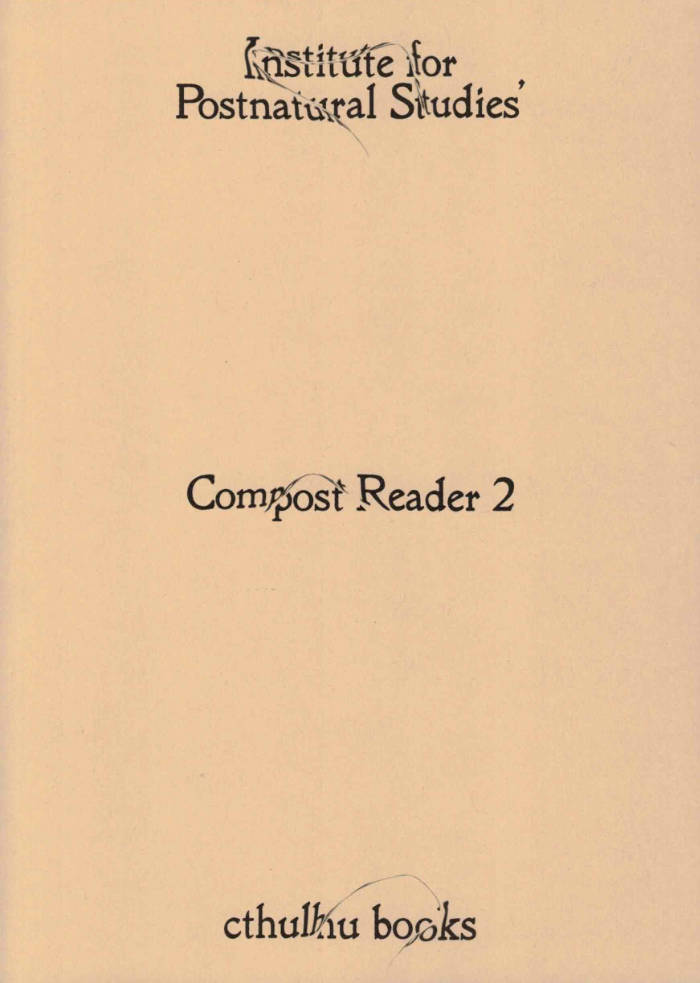
Compost Reader vol. II
Institute for Postnatural Studies
The Compost Reader series sees the world as an interconnected being, where all its parts relate to one another. Composting as a way of cultivating consciousness through questions instead of answers, and from uncertainty and doubt. Hydro-memories, a talking lion, sounds that live in a snail shell, a dry swamp, a herbal medicine witch girl, ephemeral queer performances, chemical-sensing tentacles, stone eaters, scriptures-fossil, heavy cheese-like lids, dolphins in traffic, blue humanities, and digital forensic public spaces are some of the matters fermenting in this Compost Reader.
Authors:
Filipa Ramos
Panamby
María Morata and Lorenzo Galgó
Marie Skousen
Natasha Thembiso Ruwona
Zachary Schoenhut
Pauline Ruffiot
alfonso borragán
Valeria Mata and Maxime Dossin
Esther Gatón
Cristóbal Olaya Meza
Paloma Contreras Lomas
Series Co-editors: Yuri Tuma, Gabriel Alonso
Language: English







